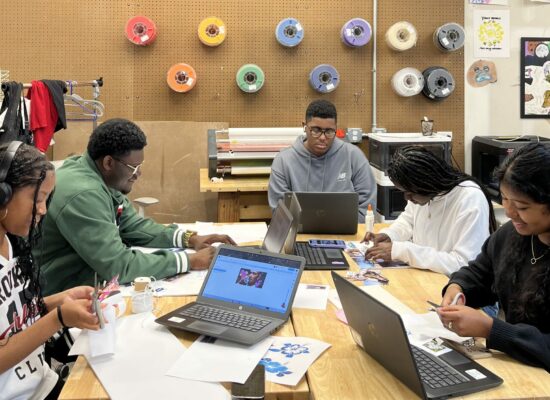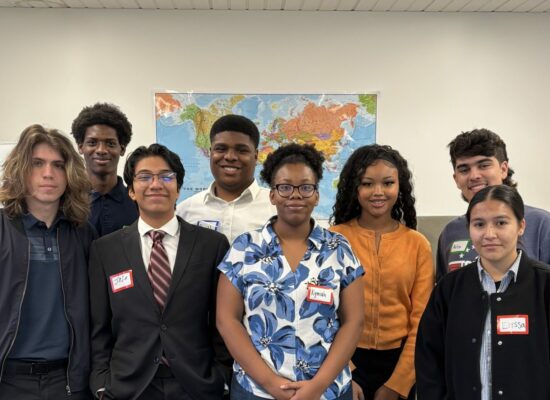
Da Vinci Seniors Tackle the “Water to Wilderness” Design Challenge
For most high school students, senior year is a time of wrapping up and looking back. But for Da Vinci Science students in the Civil Engineering & Architecture (CEA) pathway, it’s also a time of building—literally. This spring, 26 CEA seniors took on Water to Wilderness, a capstone design challenge that blended engineering, creativity, collaboration, and a bit of outdoor adventure.
The project in Andrew McGregor's CEA pathway pushed students to design and construct a shelter that they then carried, assembled, and slept in overnight at Hopkins Wilderness Park earlier this month. The journey began at Torrance Beach, where teams hauled their modular structures 2 miles uphill—most using custom-built wheeled systems. Once on site, they assembled their shelters, cooked together, performed skits, and slept under the stars in the very spaces they created.
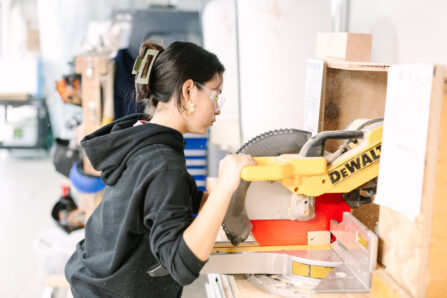
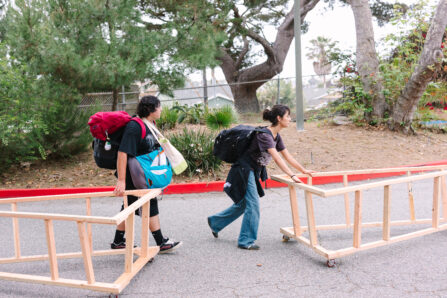
Meet “Curly Enigmas in Architecture”
One of the teams, Group CEA, short for “Curly Enigmas in Architecture,” was composed of seniors Natalie Wallis, Juan Torres, Jr., and Jason Carter—all known for their curly hair and shared enthusiasm for design.
Their structure was a fully modular hexagon split into three diamond-shaped sections, each assigned to one team member. "We wanted to stagger them to make the structure more visually interesting," explained Wallis. “We turned each diamond sideways so we could push them like shopping carts up the hill—and it worked really well.”
Built from wood (2x4s, 2x2s, and 2x3s), the design drew inspiration from both honeycombs and Star Wars’ Ewok village—a community of elevated shelters connected by bridges. Originally, the team wanted to build around trees and connect their modules with bridges, but concerns around stability led them to pivot. Ultimately, they combined three modular diamonds under a shared roof made of canvas and 2x4s—providing privacy, comfort, and community.
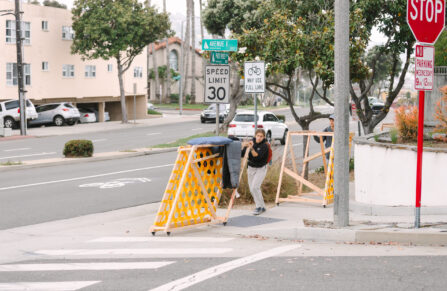

Craft, Creativity, and Compromise
The Water to Wilderness project was inspired by the "Design Village" competition hosted by Cal Poly San Luis Obispo's Architecture program. At Da Vinci, the design and build process spanned months, beginning with brainstorming in January and progressing through design, materials procurement, and a four-week build sprint after spring break. The students learned how to cut wood, assemble joints, and much more.
CEA Teacher McGregor explained: "The capstone project should be fully driven by the seniors. These students owned every part of it - from project inception, to design, to prototyping, and then to the final build. Hiking the shelters two miles uphill in addition to spending the night raised the stakes as the reality of materials, connections, and weight were all tested. To cook for each other as well as performing final skits was the cherry on top. Doing this together as a CEA family strengthened the culture we had developed the past two years. This is one of the best projects we’ve ever done."
“We used the miter saw to cut the angles, the table saw, hand drills,” said Wallis. “I’d picked up woodworking skills from robotics and was able to teach my group.” One of the most impressive features of their build was a handwoven hammock made from a nylon ratchet strap—a feature that required seven different design iterations before success. “We didn’t want to just string a store-bought hammock. We wanted to do something cooler,” she continued. “It took a lot of trial and error and Googling, but it turned out really beautiful.”
While the technical elements were challenging—particularly the hammock's complex angles—the real test, according to Wallis, was learning how to collaborate. “When something didn’t work, we all had different ideas about how to fix it,” she said. “The hardest part was figuring out how to communicate and compromise as a team, especially when we were frustrated. That’s honestly sometimes harder than the engineering.”
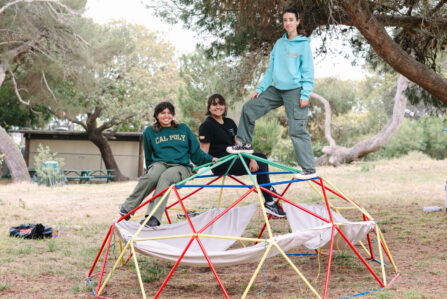
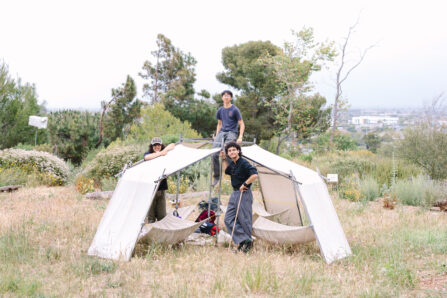
The Night That Made It All Worth It
After hours of building, testing, problem-solving--using castor wheels that “got kinda shredded” on the hike up the hill--the team finally assembled their shelter at Hopkins Wilderness Park. The moment that stood out most?
“It was nighttime. We closed up our tent all the way, I was lying there in my sleeping bag, looking up at the ceiling we built and over at my group mates. We made this. We’re in something we built with our own hands,” Wallis recalled. “That moment was just pure accomplishment. We’re not worried it’s going to break—we’re going to sleep through the night, and we’re going to be fine.”
The final Friday before the event, the team worked a full eight-hour day in the shop. “We were building, hanging out, blasting music, eating Chick-fil-A that an alum brought us. It was so cool,” said Wallis. “It felt like a glimpse of what my future could be.”
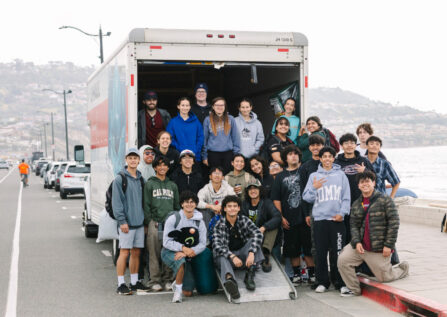
A Project with Purpose
For Wallis, the Water to Wilderness project was her favorite project during her time at Da Vinci. She completed both the CEA and Biomedical Engineering pathways at DVS and is headed to Cal Poly San Luis Obispo for biomedical engineering in the fall. Her experience was more than just a capstone—it was a launchpad.
“I feel like it’s a reflection of everything I’ve learned at Da Vinci but also a jumping off point,” she said. “It’s cool to think I’ll be doing more of this—hands-on learning, spending hours in the shop with friends, bringing designs to life.”
While she’s still deciding between surgery, biomechanics, prosthetics or something else in the biomedical field, Wallis knows one thing for sure: working with her hands and solving real-world problems will be a part of her future.
“I’ve done so many group projects at Da Vinci, and sometimes I’ve wished I could just do them by myself. But this project reminded me that collaboration makes the outcome better. It challenges you. It teaches you things that engineering alone can’t.”


